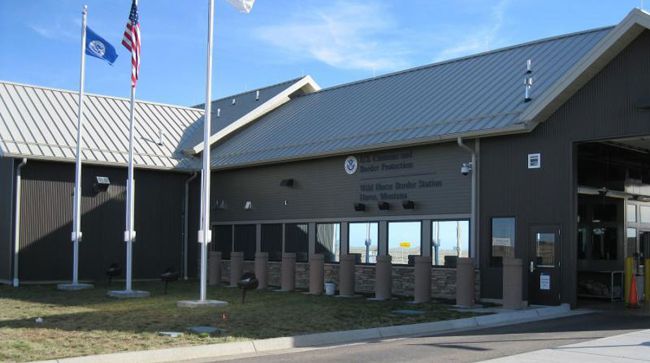Montana’s Wild Horse border crossing into Canada must remain open 24 hours to handle higher commercial truck and personal traffic, declared a letter to President Joe Biden and Prime Minister Justin Trudeau from Gov. Greg Gianforte and Alberta Premier Danielle Smith.
Currently truck drivers carrying goods “must either rush to cross during the limited hours of operation or travel longer distances to other ports of entry with 24-hour service,” noted an Aug. 24 announcement of the letter.
“Due to limited hours of service and deficiency of facilities and infrastructure, the Wild Horse crossing serves as a primary bottleneck, constraining north-south traffic and trade. As a result, businesses are either missing opportunities to move their products and services or are faced with a difficult decision to use other, more costly routes,” the letter noted.
The Wild Horse Port of Entry operates from 8 a.m. to 5 p.m. Monday through Friday. It is located in Havre, Mont., on U.S. Highway 232 (Wild Horse Road).
Of the six Montana-Alberta border crossings, there is only one open 24 hours: on the U.S. side at Sweetgrass (on Interstate 15) and its Canadian counterpart at Coutts (on northbound Alberta Highway 4). Montana has another 24-hour port of entry called Roosville in Eureka on U.S. Highway 93 opposite the province of British Columbia.

Extending the Wild Horse/Coutts crossing hours would be beneficial for people and help address ongoing supply chain challenges by enabling greater movements of goods, Gianforte and Smith contended.
“It would be a crucial link in the Eastern Alberta and Central Montana trade corridor, expanding northbound connectivity, while increasing southbound connectivity into the United States and to tidewater in Mexico,” they stated. “Commercial traffic moving to and from the central, southeast and northeast U.S. would also achieve substantial cost savings by transiting through a Wild Horse border crossing that is open 24 hours a day, and with the appropriate infrastructure investments on both sides of the border.”
Gianforte and Smith backed up their request with trade figures. Montana’s trade last year with Canada totaled $10.7 billion and U.S. trade with the province of Alberta amounted to $160.4 billion.
“Ensuring these goods can continue to flow unimpeded [between Montana and Alberta] is critical to the long-term economic prosperity of our two jurisdictions,” they urged. “We recommend the two federal governments work together to expand the Wild Horse Port of Entry to a 24-hour border crossing, with greater capacity to accept commercial traffic. Your support for such an initiative would be productive in developing a solution that caters to both of our countries’ economic and security needs.”
The letter also advocated that the United States and Canada seek ways to increase border services at lower costs using “co-located facilities at the border crossing, to lever the port most effectively. This will benefit Montana’s and Alberta’s economies and contribute to the overall economic growth of the United States and Canada.”
Canada is Montana’s largest export market in both weight and value of goods, according to the 2022 Montana Freight Plan produced by its state department of transportation.
“Montana’s top exports by weight include coal, minerals and mineral products, agricultural products and cereal grains. These are heavy, low-value commodities produced in the state,” the plan revealed. “Nearly all of Montana’s imports came from Canada in 2017: 99% of weight and 90% of value.”
The state’s imports from Canada include crude petroleum, coal byproducts, fertilizers, wood products, cereal grains, machinery, motorized vehicles and electronics.
Montana shares a 545-mile border with the Canadian provinces of Alberta, British Columbia and Saskatchewan.
Figures from the U.S. Bureau of Transportation Statistics show that in 2022 the top trucking land ports of entry from Montana into Canada were Sweetgrass, Raymond (on state Highway 16), Roosville, Piegan (a seasonal port in Babb on U.S. Route 89 open only in the summer), Del Bonita (in Cut Bank on State Secondary Highway 213), Wild Horse and Turner (12 miles north of the town bearing its name on State Secondary Highway 241).
The ports of Wild Horse, Del Bonita and Turner have been designated by the U.S. Customs and Border Protection as permit ports, meaning cargo imports must be approved in advance by the port of Sweetgrass.






